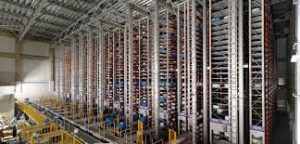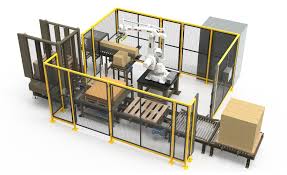
Businesses can immediately expense more capital equipment under the new law
A taxpayer may elect to expense the cost of any section 179 property and deduct it in the year the property is placed in service. The new law increased the maximum deduction from $500,000 to $1 million. It also increased the phase-out threshold from $2 million to $2.5 million. For taxable years beginning after 2018, these amounts of $1 million and $2.5 million will be adjusted for inflation.
Jan 16, 2020
– The Section 179 deduction for 2020 is $1,040,000 dollars. This means U.S. companies can deduct the full price of qualified equipment purchases, up to $1,040,000, with a “total equipment purchase” limit of $2,590,000. The deduction includes both new and used qualified equipment.
In addition, businesses can take advantage of 100% bonus depreciation on both new and used equipment for the entirety of 2020.
Temporary 100 percent expensing for certain business assets (first-year bonus depreciation)
The new law increases the bonus depreciation percentage from 50 percent to 100 percent for qualified property acquired and placed in service after Sept. 27, 2017, and before Jan. 1, 2023. The bonus depreciation percentage for qualified property that a taxpayer acquired before Sept. 28, 2017, and placed in service before Jan. 1, 2018, remains at 50 percent. Special rules apply for longer production period property and certain aircraft.
The definition of property eligible for 100 percent bonus depreciation was expanded to include used qualified property acquired and placed in service after Sept. 27, 2017, if all the following factors apply:
- The taxpayer or its predecessor didn’t use the property at any time before acquiring it.
- The taxpayer didn’t acquire the property from a related party.
- The taxpayer didn’t acquire the property from a component member of a controlled group of corporations.
- The taxpayer’s basis of the used property is not figured in whole or in part by reference to the adjusted basis of the property in the hands of the seller or transferor.
- The taxpayer’s basis of the used property is not figured under the provision for deciding basis of property acquired from a decedent.
- Also, the cost of the used property eligible for bonus depreciation doesn’t include the basis of property determined by reference to the basis of other property held at any time by the taxpayer (for example, in a like-kind exchange or involuntary conversion).

The new law added qualified film, television and live theatrical productions as types of qualified property that may be eligible for 100 percent bonus depreciation. This provision applies to property acquired and placed in service after Sept. 27, 2017.
Under the new law, certain types of property are not eligible for bonus depreciation in any taxable year beginning after December 31, 2017. One such exclusion from qualified property is for property primarily used in the trade or business of the furnishing or sale of:
- Electrical energy, water or sewage disposal services,
- Gas or steam through a local distribution system or
- Transportation of gas or steam by pipeline.
This exclusion applies if the rates for the furnishing or sale have to be approved by a federal, state or local government agency, a public service or public utility commission, or an electric cooperative.
The new law also adds an exclusion for any property used in a trade or business that has had floor-plan financing indebtedness if the floor-plan financing interest was taken into account under section 163(j)(1)(C). Floor-plan financing indebtedness is secured by motor vehicle inventory that in a business that sells or leases motor vehicles to retail customers.
The new law eliminated qualified improvement property acquired and placed in service after December 31, 2017 as a specific category of qualified property.
Changes to depreciation limitations on luxury automobiles and personal use property
The new law changed depreciation limits for passenger vehicles placed in service after Dec. 31, 2017. If the taxpayer doesn’t claim bonus depreciation, the greatest allowable depreciation deduction is:
- $10,000 for the first year,
- $16,000 for the second year,
- $9,600 for the third year, and
- $5,760 for each later taxable year in the recovery period.
If a taxpayer claims 100 percent bonus depreciation, the greatest allowable depreciation deduction is:
- $18,000 for the first year,
- $16,000 for the second year,
- $9,600 for the third year, and
- $5,760 for each later taxable year in the recovery period.
The new law also removes computer or peripheral equipment from the definition of listed property. This change applies to property placed in service after Dec. 31, 2017.


Recent Comments